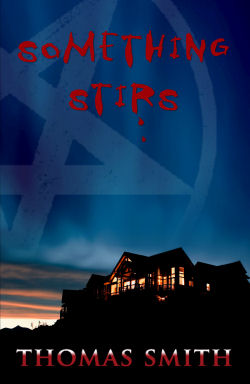|
It’s
a new month filled with new opportunities. So let’s dispense with my
normal foolishness (the editor just did a cartwheel) and pick up where
we left off last month.
I
Ideas.
Those things nonwriters often ask where you found them. Hence, those
things you must find in order to write. (And yes . . . they generally
come from your head, though that’s not the answer readers really want
to hear.)
Imagery.
The images used within a literary work to evoke atmosphere, mood, and
tension.
Imprint.
The division within a publishing house that deals with a specific
category of books.
In-house writer.
Writers on staff, who are regular employees of a publication.
In medias res.
Literally, “in the middle of things.” A story that begins in the middle
of the action, without any form of introductory passage.
Interior monologue.
The direct, unmediated thought processes of a particular character.
IRC.
International Reply Coupons. Used in place of return postage with the
SASE included with a query or manuscript sent to a foreign country.
Generally not used if you email the manuscript.
Irony. The
technique whereby a person, situation, statement, or circumstance is
the exact opposite of what it seems to be.
ISBN.
International Standard Book Number. The numerical equivalent of a
book’s fingerprint.
J
Joint contract.
An agreement between a publisher and two or more authors.
Journal. A
written record of experiences and observations. A journal can also be
the actual book in which you write those observations. Is writing in a
journal important in the overall writing process? If it helps you
become a better writer, then it’s helpful. If it doesn’t, then it
isn’t. It’s subjective. There is no right or wrong answer.
Justification.
The alignment setting of text within the left and right margins:
justified (flush left and flush right margins), and flush left (with
ragged right margin). Always use flush left unless specifically told
otherwise by your editor.
Juxtaposition.
The arrangement of two or more ideas, characters, actions, settings,
phrases, or words side-by-side or in similar narrative moments for the
purpose of comparison, contrast, rhetorical effect, suspense, or
character development.
K
Kill fee.
The payment for an assigned article that was completed but not used by
the publisher. (Also what characters on The Sopranos
got for whacking somebody, but it’s seldom used that way in the writing
world).
L
Lede/Lead.
The first paragraph of a manuscript. In a story or article, the lead
includes the “hook” to capture readers’ attention.
Lead time.
From the time an editor receives a query letter or article until the
publication date of the article. It is especially important to pay
attention to the lead time for seasonal articles and stories.
Line edit.
Editing copy for clarity, logic, and flow.
Literary fiction.
The general category that pertains to serious, nonformulaic fiction.
Literary fiction generally focuses more on style, psychological depth,
and character than narrative, plot, and story.
Logline. A
one-sentence description of a screenplay or TV script. Also, a group of
individuals waiting for their turn to see a giant piece of petrified
wood, but I digress.
M
Mainstream fiction.
Fiction that encompasses popular fictional categories such as mystery,
romance, Westerns, and science fiction.
|
Manuscript.
The
original text of an author’s work submitted for publication.
Mark up.
The act of putting composition or editing instructions on copy or
layouts.
Market.
Regularly updated information for writers indicating a publisher’s
needs, relevant contact information, and detailed instructions on how
to submit your work. (Why is this in bold? Because writers
who neglect market research tend to be writers who don’t publish very
much. Market research is critical.)
Marketing.
Practices and techniques used by the publisher and the author
to increase awareness (and hopefully sales) of your book. With the
major changes that have taken place in publishing over just the last
five years, a large share of the marketing and promotion of a new book
falls to the author. Internet and other targeted forms of marketing are
important resources for the modern author.
Mass market.
Nonspecialized books with a wide appeal targeted toward a large
audience.
Masthead. A
section printed on one of the first pages of a magazine, newspaper, or
other publication that gives information on the company, location, and
staff.
Midlist.
The titles on a publisher’s list that, though not expected to be big
sellers, generally generate modest/acceptable sales.
MS. The
abbreviation for manuscript.
Multiple submissions.
The practice of sending more than one piece of writing to a publisher
at the same time. (Not to be confused with simultaneous
submissions,which refers to the practice of sending the same
piece of work to different publishers at the same time.)
N
Narrative nonfiction. Also
called creative nonfiction. The narrative presentation of actual
events. Examples include personal essays, memoir, travel writing, food
writing, biography, and literary journalism.
Navel. What
many writers of literary fiction stare at just before they start
writing.
Novel. What
most writers (and many nonwriters) feel they have hiding in their
fingertips. Some writers equate being a writer with being a novelist.
But remember, in any given year, more people make a living as
professional baseball players than as novelists.
Novella. A
short novel or a long short story. Novellas are generally 7,000 to
15,000 words.
Well, this seems like a good
stopping place for this month. Now I think
I’ll flip through all 1,585 TV channels with my trusty remote, find Sesame
Street, and start my preparations for the next installment of
this letter-laden learning experience.
And until next time, remember
this: It’s not a rejection letter. It’s a
reminder to pitch the idea somewhere else.


|









